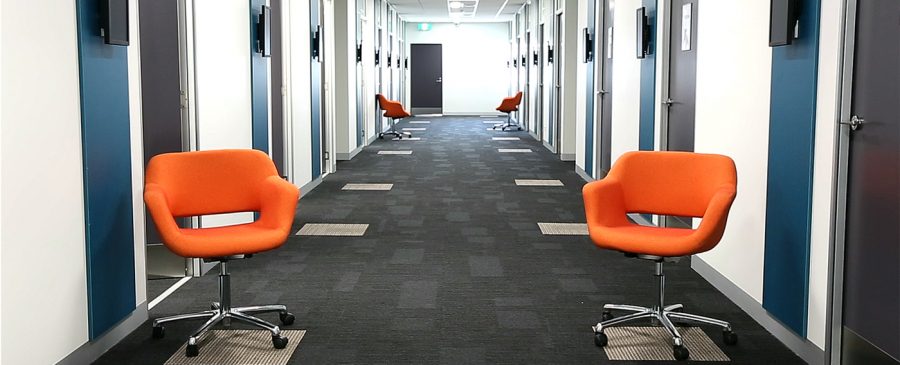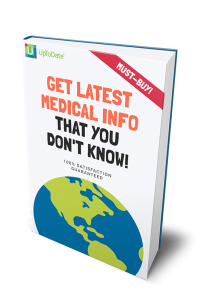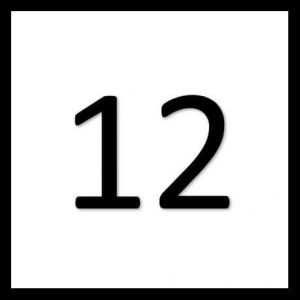[Clinical] AMC Clinical Examination Tips and Tricks

You should know by now that the AMC clinical examination is a very unusual and very stressful examination. However, it is actually at the level of a final year medical student and quite “doable” with the appropriate preparation and understanding of the nature of it. Get set for AMC exam success with these eight essential study tips and tricks. Use these proven methods to prep for your exam and then crush it.
Most IMGs find that it is not so much a test of medical knowledge (that was covered in the MCQ exam!), but much more a patient centered, communication skill testing examination. That means the preparation for this examination is not so much about more knowledge acquisition but about your behavior and your professional attitude.
This exam is like a game – you need to play by the rules! Others say it is like a dance and you have to know the steps well or it is like taking part in a movie and you have to know your role well!!!
You will deal mainly with role-payers and usually the examiner does not ask any questions but just observes your performance. The role-players are of varying quality, often young medical students playing elderly patients which can be quite confusing when you walk into the room. There are some real patients, e.g. with rheumatoid features, cardiac murmurs, peripheral neuropathy, joint problems, liver symptoms etc. but they are a rarity.
In general the role-players, patients and examiners are very supportive and want to help you (even though you might not believe this)! So please listen to them carefully, they often try to give you valuable hints!
On many occasions there is a second examiner present who is actually there to assess the process of the examination itself and rotates through the stations. That examiner does not judge your performance, so please do not worry about her/is presence.
AMC Clinical Examination Tips and Tricks
PREPARATION:
The “AMC Handbook of Clinical Assessment” is the best investment you can ever make. It gives you very comprehensive explanation of the examination process, has incredibly important hints for the different clinical areas covered in the exam and gives fantastic examples with detailed explanations of all aspects of a scenario.
Each chapter is prefaced by most valuable explanatory notes which I encourage you to read thoroughly because they explain the Australian approach! A great example is the introduction to “The Psychiatric Consultation” which covers in a very brief and precise way what you are expected to consider when examining a mental health patient.
Cases from the book and from the “recalls” appear regularly in the examination and surprisingly many candidates fail these stations!!! “Recalls” can be very misleading and rather than to rote-learn the stations I recommend to be aware of topics but to work through them in a thorough way realizing that a scenario can easily change, e.g. RLQ pain in a female patient might be appendicitis in one exam but could be ectopic, an twisted ovarian cyst, renal colic or domestic violence in another exam. You really have to have a good understanding of the underlying issues!!!
My explanation of this phenomenon is that the examiner finds out very quickly if a candidate has just rote learnt a case, regurgitating facts but not demonstrating a thorough understanding of the case.
I believe that the publication of the book has given IMGs an opportunity to understand the nature and requirements of this examination much better than ever before and it is really important to know about the expectations and to understand the importance of for example critical errors.
Other necessary books and resources in priority listing:
1. UpToDate
1. John Murtagh’s “General Practice” : can be found here
2. Tally & O’Connor “Clinical Examination” : can be found here
3. “Paediatric Handbook”, Royal Children’s Hospital : can be found here
4. The Royal Women’s Clinical Guidelines : can be found here
5. “Therapeutic Guidelines Antibiotic” but there are many others which are
worthwhile reading.
6. Kaplan’s Clinical Psychiatry : can be found here
Regarding other books covering surgery, medicine, O+G, psychiatry and other fields please refer to the AMC web site.
In your preparation concentrate on the O+G and paeds cases first because you have to pass at least one of each otherwise you fail the whole exam. That means you should revise the approximately 150 paeds recalls and 180 O+G recalls which should give you a good chance to already pass 6 stations!!! – simple mathematical odds!!!
The third priority goes to psychiatry because there are usually two psychiatry scenarios in the exam and most IMGs don’t feel comfortable with mental health issues. The introduction to the psychiatric consultation in the AMC handbook (pages 436-446) is an excellent starting point and highlights the areas we expect doctors in Australia to know about!
There are probably about 80 psych recalls. If you go through them, you now should have a good chance to have passed already 8 stations!!! simple mathematical odds!!!
You should try to cover at least 4 years of recalls, if not even 5!!!
“Objective Structured Clinical Examination” (OSCE) and “Multidisciplinary Clinical Assessment Tasks” (MCAT):
The assessment domains include:
- Approach to patient
- Patient counselling / education
- History
- Technique of examination, organization and sequence
- Accuracy of examination
- Commentary to examiner
- Choice of investigations
- Interpretation of investigations
- Diagnosis /differential diagnosis
- Initial management plan
- Explanation of clinical procedure
- Performance of procedure
- Familiarity with test equipment
- Answers to examiner’s questions
A good study group is most beneficial and you should actively role-play and be very critical with each other! From my experience the best study group has 3 people (one candidate, one ‘examiner’, one observer) because everyone will want the chance to perform and you will learn by performing! One of the 3 should at least have an UpToDate or any open source subscription so that you are able to search for the right approach while going through recalls. Everybody should get a chance to role-play and giving honest critique is very useful for the observer as well as for the role player!
Ideally you should organize real “trial exams” with your study group, for example 8 or 16 cases in a row, even cases out of the book!
Include hanging the stem on the wall or a door and pretend that you come into the examination room. It helps you to understand the pressure of the exam and to learn how to put a bad performance behind you.
Like the 3 “P’s” in real estate (position, position, position), here it is practice, practice, practice!!!
It is really worthwhile doing it! Just reading and thinking about these exercises does not help. Instead, do it like Thomas The Tank ( a lovely children’s story) and you’ll find You can do it!!!
THE STEM:
Read the instructions carefully!
THE 5 Qs (questions) (always ask yourself at the door while reading the case info):
1. Who am I? (GP or junior MO)
2. Where am I (general practice or hospital – rural or metro?)
3. What are the problems? (diagnosis, differential diagnoses, main and hidden issues, e.g. polyuria presenting as ?prostate problem, but being T2DM or head banging child where the mother has significant social problems which need to be addressed as well)
4. Is it an emergency? (immediate physical examination, DRABC and management first?, make sure patient is SAFE!!!)
5. What are my tasks? (stick to the tasks!!!, manage your time appropriately!). You only have 8 minutes, so be well organized! Every word has a meaning! If the stem mentions that the patient is an “abattoir” worker, this can be an extremely important fact that he might suffer from a zoonosis, a disease transmitted by working with animals! Similarly, if the stem says that a patient is on “tamoxifen”, she probably had breast cancer. If you are not sure about any aspect regarding the stem, you will have an opportunity to ask the examiner for clarification after you have entered the room.
The scenarios are usually single topic stations, the main diagnosis will be apparent fairly early, sometimes even after finishing reading the stem outside the room. If it seems to be a case of cholecystitis try to demonstrate an organized, structured and focused approach, honing in onto the “main problem”. However, keep an open mind and talk about differential diagnoses as well, because you might just think it is “cholecystitis” but in reality it might be pancreatitis or something else. This becomes especially important if the role player or the examiner makes comments like: “Dr. last time I had cholecystitis, it felt quite different” (this is only an example!). Prick up your ears and start to review if the role player might try to give you a hint that this case is something different.
Occasionally one station can contain two separate issues, e.g. a paeds case might be complicated by a parent with a psych or social problem and you might be expected to cover both topics. If you deal quite well with the paediatric component but ignore the fathers “drinking problem” (for example), you could be at high risk to fail the station.
In summary, in most stations you should have a good idea about the task and a well structured plan of approach in your head at the end of the reading time and before you walk into the room.
There is another copy of the instructions in the room and often it is useful to look at them again to make sure that you are following the prescribed tasks.
There is also a pen and paper, so please make notes either for your own plan of progress, e.g. 1.,2.,3. etc or DRABC or drawings for the patient to explain things.
INTRODUCTION:
- Be mindful of dress code, probably a bit formal but loose enough to feel comfortable!
- Please introduce yourself to the patient / role player, SMILE and be nice!!!!
- Address the patient as Mrs. or Mr., not just “Jane” or “John” or ask the patient “How do you want me to address you?”
- Sit at the consulting room desk, relax, keep your back straight, lean forward a little bit and keep your arms relaxed in your lap or on the desk
- Keep eye contact with the patient for at least 90% of the interview, don’t look down onto the information sheet or the desk for long! Look at the patient’s forehead or between the eyes giving the impression that you look into the patient’s eyes all the time.
- Be mindful of your body position, sit upright with an open stance towards the patient, but not too close and relax – that way you appear more confident! Relax your facial muscles and smile (careful – not in “breaking bad news stations!).
- Speak clearly, not too fast, not monotonous, not too loud!!! Use a moderately pitched, soft voice!
- Try not to interrupt the patient although you might have to interrupt if the patient goes on and on. It is most important to analyse at the beginning if the case could be an emergency and then you should always start with “DRABC” (or a question to the examiner “Is my patient stable?”) and most likely give oxygen!!! If there is a hint that the patient has pain, you should always consider to provide some pain relief.
- Exhibit confidence, practice good communication skills, including your body language, how you position yourself etc. Respect the patient’s privacy and ‘space’ = don’t get too close! In most stations you’ll sit in front of a desk, lean towards the patient.
- Try to “take control” of the consultation and imagine that it is just you and the patient like in a real situation, be convincing and confident!!!
HISTORY:
Invite the patient to “tell their story “. If they use terms that you don’t understand ask them for an explanation. Make a definite attempt to use open ended questions (Tell me more about….; Is there anything else you would like to talk / you are wondering about?).
CONCENTRATE on important and relevant issues, don’t ask unrelated questions!!! Listen carefully to the patient’s/role player’s words or questions. They have strict instructions to make certain comments or ask certain questions directly relating to the problem and there is always an important meaning behind it! I call it “keep your antennas tuned in” so you can realize what the role player or the examiner wants to get through to you.
Don’t cut them off! Encourage the role player to ask questions whenever possible. They are there to help you and might put you on the right track or give you clues in which direction to go. You might like to repeat what the patient has said for clarification and make sure what knowledge or understanding (or misunderstanding) the patient has about the problem! You might like to ask “Any questions you want to ask me?” or “Do you understand?” or “Anything else you want to tell me?”.
Sometimes role players do not volunteer a lot of information and you have to ask specifically. So please stick to your systematic approach of history taking, but often role players provide vital information if you as the right question like “What do you think is causing the rash?” (My neighbor’s son had a slapped cheek last week!) Good communication skills are extremely important (speaking and listening!!!). Please practice your English and make a contract with your family or friends to ONLY speak English in the 6 months leading up to the examination!!!
DON’T use medical jargon, but simple language!!! Although sometimes you can and want to use a medical term like “subarachnoid haemorrhage” (to demonstrate your knowledge to the examiner) but you have to explain in simple terms that this is the space between the skull and the brain or ask the patient if s/he understands what you talk about – in the examination the patient most likely will answer “Yes, I have heard that term before”, so there is no time wasted.
In probably 80% of presentations you should be able to establish the probable or even definite diagnosis after a proper interpretation of the history! Make sure you have a systematic approach and plan your approach to physical examination, investigations and management:
a) The most likely and 3 age / gender related differential diagnoses?
b) What would be important to concentrate on in physical examination and investigations to confirm or exclude diagnoses?
c) Were there other important factors or risks in the patient’s history supporting one of the diagnoses over another?
d) How do you explain the diagnosis and differentials including prognosis and possible complications to the patient?
e) What is the most appropriate management for the main and other differential diagnoses, including lifestyle, counseling and prevention?
EXAMINATION:
When it comes to the examination, often you do not perform a physical examination but you have to ask the examiner for the findings. Please approach this in a very well structured way, firstly tell the patient that you will ask the examiner for the findings and then be pleasant to the examiner and it does not hurt to say “Thank you” at the end. Be systematic (Talley O’Connor style!) starting with the general appearance and vital signs.
Regarding the vital signs, the examiner will normally provide pulse, blood pressure, respiratory rate, oxygen saturation and temperature. However, if you suspect a possible difference in e.g. blood pressure in right and left arm, or if you expect an orthostatic or if there is a chance of co-arctation of the aorta you will have to specifically request the specific corresponding findings like BP in right and left arm, BP lying and standing and radial as well as femoral pulses.
Then follow the usual examination path from head to toes, although often it is more appropriate to focus on the area concerned, for example the abdomen, if it is an abdominal pain station and it is worthwhile to ask the examiner “Is it alright to go straight to the abdominal examination” (most likely the answer will be “Yes” – again no time wasting!).
Sometimes it pays off to briefly ask for results of the cardiovascular or respiratory system examination and you’ll find that the examiner quickly skips over it and says “all normal” or “please concentrate on ….(e.g. the abdomen)”. You need to realize that the examiner will only give you findings if you specifically ask.
For example it is pretty useless to ask “What are the findings on inspection of the abdomen” or “Are there signs of liver failure?”– the examiner most likely will respond “What are you looking for?” This wastes a lot of time. Please ask straight away “On inspection I look for distension of the abdomen” – the answer will be “it is (or it is not) distended”.
Ideally you should tell the examiner at the same time why you perform an examination, what you expect to find and what the underlying problem could be, e.g. “I am looking for tenderness in the RIF over the McBurney’s point to confirm or exclude a likely appendicitis”.
In a real physical examination, eg “the shoulder”, first use a hand cleaner, tell the patient what you plan to do and ask for consent. E.g. “I want to examine your shoulder, is that o.k.?”!
It is well received if you give “running commentaries” and explanations to the patient (and indirectly to the examiner!) or “mumble” to yourself (and the examiner) what you are doing.
Please be gentle to the patient/role player (they go through this up to 32 times during the day!!!!
AMC provides all the necessary tools, although most candidates like to bring their own stethoscope but all the other paraphernalia (e.g. red topped pin, Snellen chart, reflex hammer, cotton wool, filament, measuring tape, pillow for hand examination etc.) are there. However, you might have to ask for them and then the examiner will produce them for you. In some stations things are on the desk and you just have to grab them and it is surprising how often a candidate will not use the provided things like cotton wool for sensory testing etc.
INVESTIGATIONS:
Regarding investigations it is very useful not to ask for “FBE, ESR, CRP, U+E, LFT’s etc.” but rather to be specific and indicate to the examiner the relevance why you order the test, what you suspect and what the test result would mean to either diagnosis or management/treatment. Show perspective rather than ordering irrelevant and unnecessary tests! For example don’t just order an FBE in a patient with suspected chest infection. It is much better to focus on the WCC to exclude leucocytosis. Order simple investigations first, especially office tests if applicable! More complex investigations like CT and MRI came later. The most valuable office tests are the urine dip-stick, urine pregnancy test and finger prick for glucose!
DIAGNOSIS:
Often the diagnosis is clear very early, so tell the patient what you suspect it is in lay language and terms the patient understands. Ask the patient if s/he knows the diagnosis and what s/he knows about! Keep differential diagnosises in mind and demonstrate analytical thinking and critical decision making!
If the patient seems hesitant to accept your diagnosis or advice be prepared to change your mind if the evidence doesn’t support your diagnosis. This is very much a patient centered examination and it is always appreciated if you draw a picture, a diagram or a decision tree (there are pen and paper on the desk!!) to make your explanations clearer for the patient (and the examiner!) and you can always add: “…. and I will give you a hand out to take home.”
MANAGEMENT should include:
- Investigations (routine investigations before invasive and avoid over investigating)
- Medication and other treatment (surgery, physio etc.)
- Reassurance
- Consider working with other health professionals in a multi disciplinary TEAM!!!
- Referral
- Admission to the hospital
- Long term management and follow up, incl. community resources, e.g. “Beyond Blue”
- Management includes the 5 R’s.
- R-Rx- treatment—Explain treatment options, including non pharmacological options
- R-Review- Follow up in a fixed time, often the next day or may be few weeks or days
- R-Referral-Refer to a specialist if needed but explain what to expect
- R-Red flags-Explain red flags I.e. dangerous things e.g. Hypoglycemia & Hyperglycemia in Diabetes & what to do
- R-reading material-Handover reading material so that patient can remember what you said to him.
(DON’T refer a patient to your senior, a consultant or outpatients without explaining to the patient exactly what will happen. It is a mistake to try to get out of a situation by saying “Oh, I’ll refer you to the orthopaedic surgeon.”.
You have to be quite specific why and what will happen there. However, referring to a cardiologist for cath lab, to members of the multidisciplinary team, e.g. physio, speech pathologist, registrar etc. is quite appropriate but the reason and what has to be expected should be explained to your patient/role player!
I prefer to say that “I will include the cardiologist” rather than “I will refer you to the cardiologist”.
Don’t be too firm in your advice to the patient, rather present options! It is the patient’s choice what he/she is comfortable with. Don’t be sucked in to say “Oh, yes, you definitely should have a hysterectomy” (for example in menorrhagia) – it is only one option of a range of management possibilities! Make sure the patient understands the options!
Sometimes a patient/role player does not accept your advice, e.g. Jehovah’s witness and blood transfusion or refusal to have children immunized. All are expected to do in such a situation is to accept their point of view but to explain the issues and consequences to the patient or in rare circumstances you might have to refer to a guardianship board.
Always consider follow-up appointments, especially re “side-issues” like smoking and drinking if they are not the main topic. It is a patient centered examination and lifestyle advice is very important, however you might not have enough time to go into great detail.
Towards the end of the station always ask “Do you have any questions”. That helps the role player to give hints if you have missed something!
TIME!
8 minutes is a very short period! Having a clearly visible watch can be your life saver in the exam! Sometimes there will be a bell ringing during the exam and the examiner might interrupt you after e.g. 4 minutes to say “Please move on to your next task” or “It is time to move on to your next task”
WHAT TO DO DURING EXAM:
*CALM – remaining calm in unexpected or difficult circumstances is the key to survive that station or even the rest of the exam. You may never know that you will still pass that station even if you don’t know much or you feel so bad!
*NICE – always be nice to the patient. Everything counts. Your attitude, manner, voice and language. Don’t end the consultation in a way that patient feels more confused, threatened, option-less or not being taken care of.
“Approach to patient”: obtain the trust and confidence of the patient whilst being honest about the future. Point out the level of success which can be expected with modern management. Guarded reassurance! Instructions should be clear and precise!
*SAFE – never forget that you’re either a GP or junior MO. Don’t hesitate to ask for help or second opinion from a senior doctor. At least to mention you would ask or check with ….. (such and such a consultant) if you are not sure. In some stations it is important if not even critical to refer a patient to a specialist (e.g. psychiatrist etc.). If they can’t see the patient soon, then get their advice over the phone. If time allows, always provide a safety net, eg follow-up, when to seek help , etc.
Most candidates fail a few stations, so be prepared ! Often there is one scenario which you might not know much about at all and you soon think that you have failed that station. It is extremely important not to think about it any longer. Once you have walked out of the room, clear your mind, forget about it, put it behind you and concentrate on the next station and believe in yourself!!!
Even if somebody fails the examination, it is not a disaster. A wise man said: “FAILURE IS ONLY A WORD, NOT A SENTENCE!”
Sometimes you might have “nerves” or even a “brain block” – it is most important to relax and go back to basics, e.g. go back to the previous task or even the beginning and talk to the patient, e.g. “O.k. you told me your history……” and wait what happens. The role player might help you with a hint because they are very willing to help you out! Or use pen and paper to summarize what you have done and where you are to find your thread again. A summary where you are up to might prompt further questions from the role player!
DON’T LISTEN TO NEGATIVE STORIES AND RUMORS!!!!!!!!! – STAY POSITIVE!!!!!!!!!!!!!!!!
Horror stories are usually based on the negative experience of colleagues who failed a station and naturally their view is colored by that! Even simple rumors like “Melbourne” is more difficult than “Sydney”. Believe me it is not true, the standard is the same in each examination centre! However, if you are convinced by such a rumor, just don’t apply for the exam in that city, simply for psychological reasons.
The day of the examination:
If you go interstate please allow sufficient time to familiarize yourself with the location of the examination centre. Make sure if have a relaxing evening before the exam day, that might include a massage, a romantic dinner, a walk on the beach, a concert or whatever “tickles your fancy”. DON’T STUDY!!! What you haven’t learned by now you won’t catch up with tonight!
On the day itself try to relax, relax, relax!
Pamper yourself, put your favorite make-up on, dress up a bit, wear lose clothing – most of us start to get very nervous and to sweat a bit and no doubt you’ll feel uncomfortable if you have tight fitting clothes on with a sweat stain under your arms.
Just a reminder that you also should look forward to “life after the examination” and that means finding a job. Remember you need to have all your paperwork ready for registration with a medical board in the state where you apply or now the national medical board. The most commen hold-ups are lack of current language certificate (it has to be within the last 2 years) and the certificate of good standing from medical authority in the country where you practiced medicine before. It happens regularly that IMGs can’t start because of some aspects of the paper work being missing!
GENERAL HINTS FOR EXAMINATION PREPARATION:
Planning for the examination:
The waiting time between MCQ and clinical examination can be quite long and extremely frustrating. It seems unfair. However, there is no way to change this (like the weather) and you have to accept it and deal with it in a rational manner. AMC tells us that their main consideration is your ranking or performance in the MCQ examination. The average wait is probably 18 months.
When you apply for an examination date you should then work towards being in top form for that date, like an athlete preparing for the Olympic games. You want to peak at the right moment and remember, you are in control!
You have to be really motivated to sit the exam otherwise you might as well not go for it!
Personal responses to the examination stress:
We are all different and will experience different emotional and physiological responses to the exam stress which also influences our social and family environment.
Many candidates exhibit symptoms of anxiety or sometimes even depression which need to be addressed possibly with a referral to a counsellor.
A healthy balance of mind and body is important. They can be supported by relaxation techniques, massage, physical fitness exercises etc.
PLEASE erase the words “Signs of….” and “Don’t worry!” from your memory bank because as outlined under examination the question for “Signs of …..” will not be answered by the examiner who will wait until YOU ask specifically for those signs, e.g. in cardiac failure you want to know if the JVP is raised or sacral oedema etc. The comment “Don’t worry!” does not go down well with the patient because even it is a trivial problem, the patient IS WORRIED! And the patient will think that you just don’t understand which is not a good start to develop a doctor – patient relationship.
Clinical Pearls: Bear in mind! It is best to have broad differentials to tackle all clinical stations. You may refer to our post here. Keep practicing especially in pairs/groups will help improving clinical skills. By reading up UpToDate can help in providing proper management based on the different scenarios encountered.
amc tips and trick, amc exam tips and trick, amc study tips and trick, amc guide



